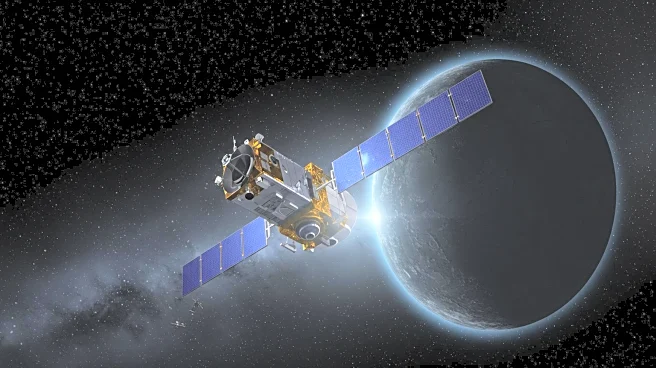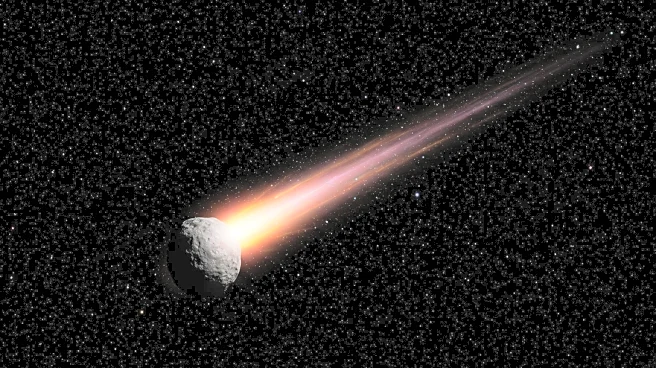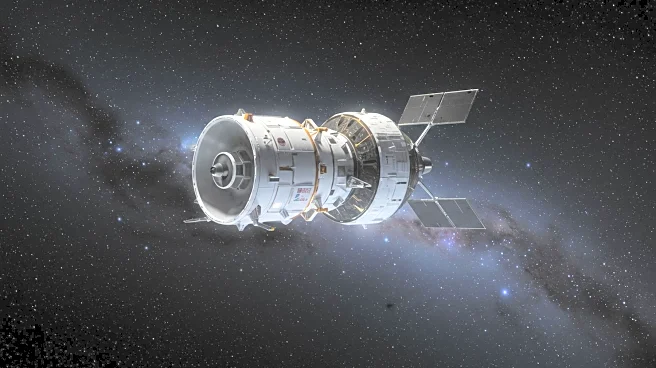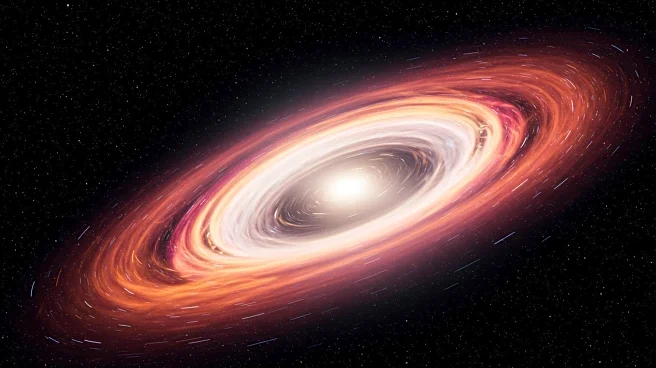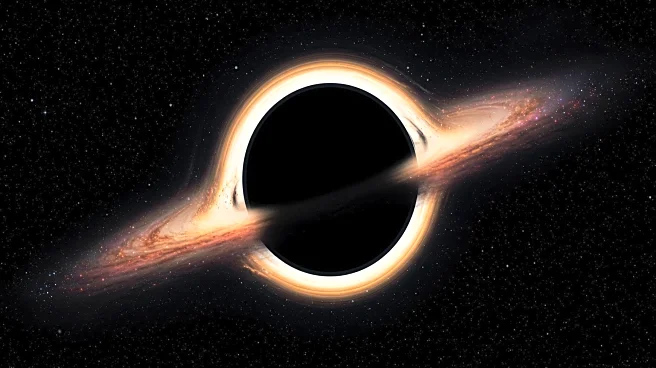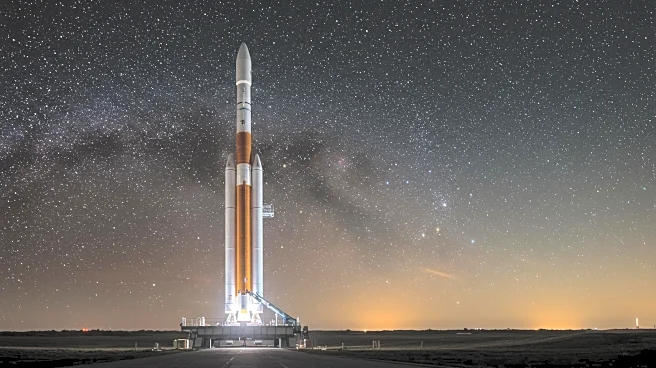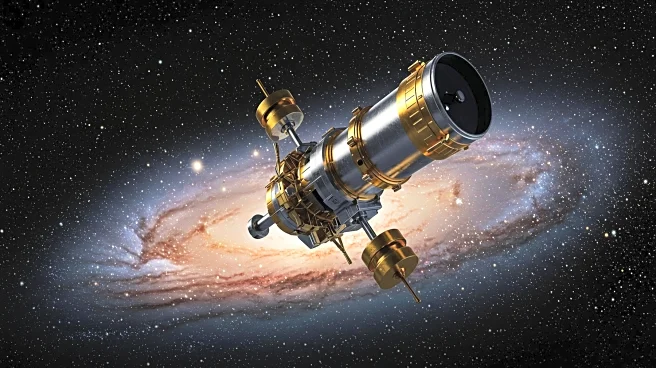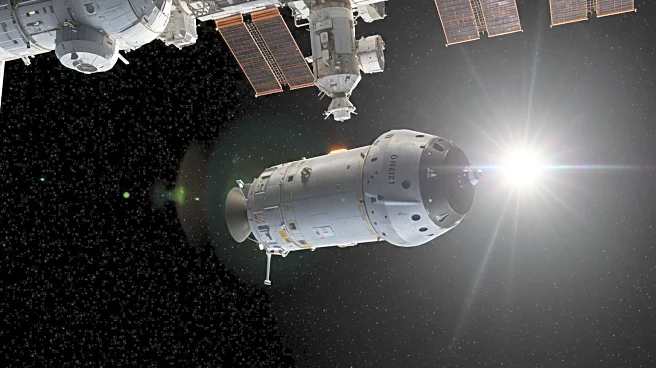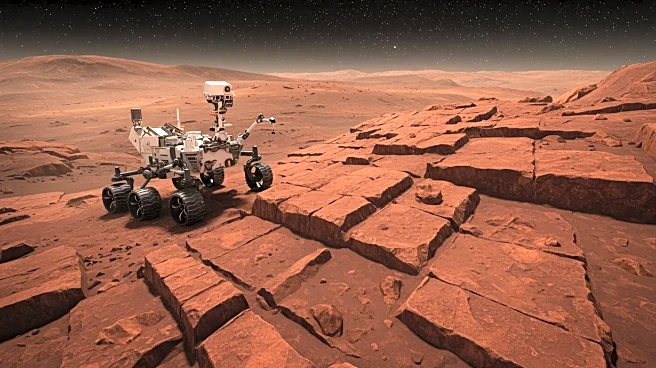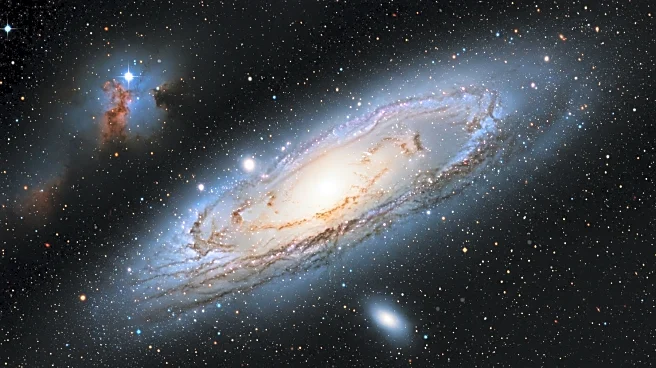What's Happening?
NASA's Imaging X-ray Polarimetry Explorer (IXPE) has revealed new insights into black hole coronae, challenging existing models. The discovery of a 9.1% polarization degree in black hole emissions suggests dynamic complexities, such as strong winds from accretion disks or moving coronae, contrary to previous perceptions of black holes as simple celestial vacuum cleaners. The findings have sparked interest and discussion among the public and scientific community, with enthusiasts and professionals engaging in online debates about the implications of these results. The term 'heartbeat' black hole has emerged, illustrating the dynamic nature of these cosmic entities.
Why It's Important?
These findings have the potential to reshape our understanding of black holes, influencing theoretical frameworks in astrophysics. The discovery challenges long-standing models, prompting scientists to reconsider the physics governing black hole environments. This could lead to advancements in space exploration technologies and methodologies, impacting research institutions and the scientific community. The renewed interest in black hole dynamics may drive further investment in space research and technology, fostering innovation and collaboration among scientists worldwide.
What's Next?
NASA and other scientific organizations are expected to continue analyzing IXPE data, potentially leading to new theories about black hole behavior. The scientific community may develop revised models to explain the observed polarization, influencing future research directions. Public interest in space exploration and black hole studies is likely to grow, with enthusiasts eagerly anticipating further discoveries. Collaborative efforts among international space agencies could enhance understanding and exploration of cosmic phenomena.
Beyond the Headlines
The IXPE findings highlight the importance of interdisciplinary collaboration in advancing space science. The challenge to existing models underscores the dynamic nature of scientific inquiry, where new data can prompt reevaluation of established theories. This discovery may inspire educational initiatives to engage the public in space science, fostering a deeper appreciation for the complexities of the universe.
